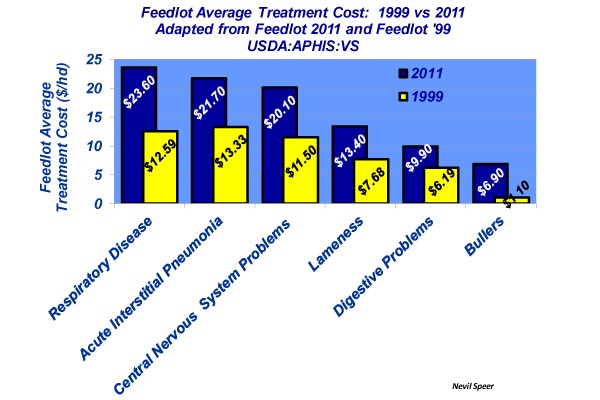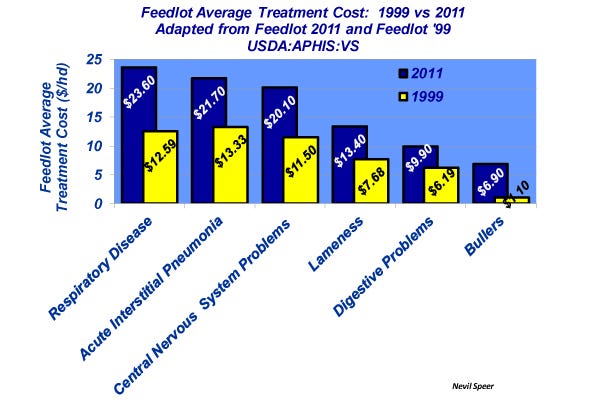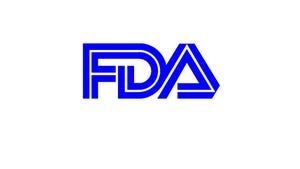Industry At A Glance: Feedlot Treatment Costs Continue To Grow
The bottom line is that treating cattle disease, along with all production factors, has become increasingly costly in the feedyard.
November 21, 2013

USDA’s Veterinary Services (VS) provides the beef industry with valuable services through its various surveys over time. These surveys allow for useful and meaningful insight into major trends within the industry. One such survey is assessment of the feedlot sector.
This fall, VS released results from the Feedlot 2011 survey. When compared to the Feedlot ’99 survey, one of the most interesting aspects surrounds the difference of treatment costs for various cattle diseases. It’s important to note that the survey details direct treatment costs (e.g., cost of antibiotics) vs. indirect treatment costs (loss of performance, labor, etc.).
In fact, the direct cost of treatment of bovine respiratory disease (BRD) in feedlot cattle is substantial at $23.60/case. These costs appear to have nearly doubled since 1999, when the cost of treatment was estimated at $12.59/case. This direct cost alone highlights the reason that feedlot operators’ management strategies are frequently directed at minimizing the occurrence of BRD in these cattle.
The bottom line is that treating disease, along with all production factors, has become increasingly costly in the feedyard. As such, it’s probably safe to assume that indirect costs have also increased proportionally. Additionally, the data clearly indicate that BRD and pneumonia continue to be the largest and most costly challenge to managing new arrivals at the feedyard.

Respondents indicate that 16.2% of all cattle are affected by BRD (vs. 14.4% in 1999). In other words, we haven’t made any progress toward reducing incidence of BRD in the feedlot. Simultaneously, 21.3% of cattle are estimated to undergo preventive treatment (metaphylaxis) in the latest survey vs. 18.8% in 1999.
What’s your assessment of these costs? Are the actual costs in line with those on your operation? Do you find these trends surprising? How are managing treatment costs to keep them at a minimum?
Leave your thoughts below.
You might also like:
60 Stunning Photos That Showcase Ranch Work Ethics
5 Simple Steps To Up Your Cow Herds Profitability
Bale Grazing Lets Cows Feed Themselves
About the Author(s)
You May Also Like





